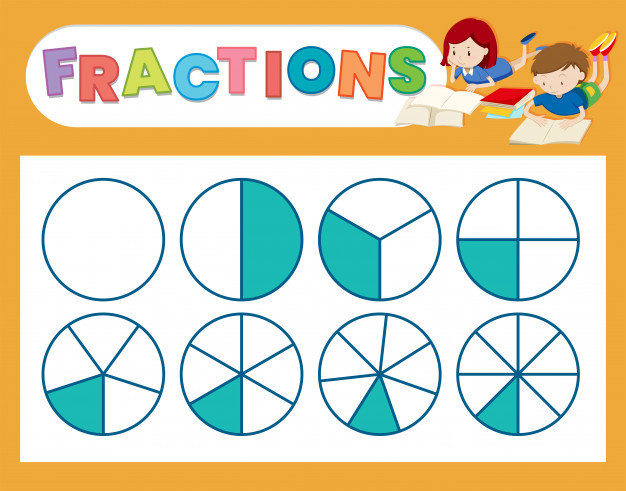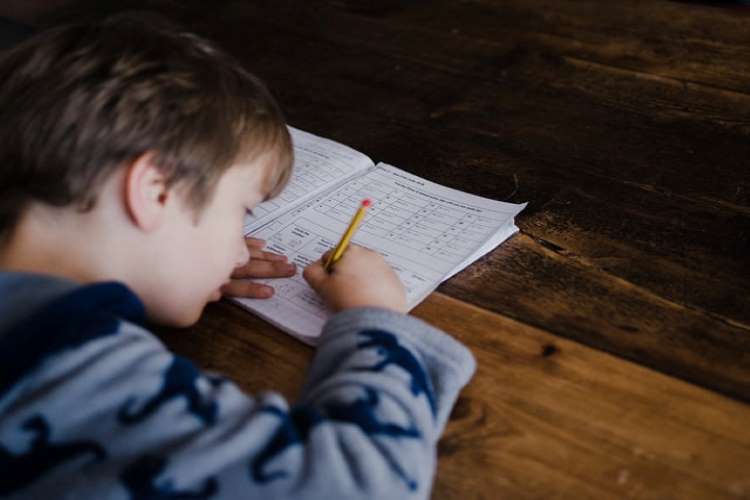Fractions assist children in comprehending the essence of figures and their relationships. If a child does not understand how fractions function, he will struggle to learn algebra later in life. Fractions are significant because they indicate what section of a whole you need, have, or desire. In cooking, fractions are used to indicate the number of ingredients that are required for the dish. Duration is told using fractions; each second is a fraction of a minute and each minute is a fraction of an hour.
In this article, you will learn everything you must know about fractions along with some exciting activities for you and your kids.
Introduction to Fractions: Fraction for Kids
In the sections below, you will learn about fractions, its types with a lot of examples and activities for your kids. The contents in this article are:
#What is a fraction for kids?
#Parts of fraction for kids
#Examples of fraction
#Fraction for kids worksheet activities
What is a fraction? Easy Fraction Definition for Kids
Fractions are used to describe smaller chunks (or parts) of a larger whole.
The pieces may make up a single item or several things. In any case, they constitute what is known as a whole. It is interesting to remember that the term “whole” can refer to more than one object. It’s helpful to conceive about a candy store as an example. Consider a bar of chocolate, a cookie bar, or a muffin for exchanging a single entire number. Consider a package of sweets, there are many sweets in the box, but you do need all of them just to make the entire box.
Also Read: Vedic Maths Tricks for Kids: An Innovative Way of Learning Mathematics
Parts of Fraction
A fraction is made up of three pieces. They are as follows:
The numerator, which is the number above the bar
The denominator is the number beneath the bar.
The vinculum is the bar that separates the two numbers.

Examples of Fractions in Daily Life
You may not realise it, but fractions are everywhere around us! Here are some examples of common fractions:
#Splitting a dinner bill into halves, quarters, or thirds
#Making price contrasts in the store when something is on sale for half price
#Figuring out numbers in the kitchen, for starters, if a dish serves 10 people but only 4 are consuming, you’ll need fractions to work out the right number.
#Adding numerical values
#Take a look at the time! When it comes to time, half-hour and quarter past are all traditional phrases!
Why are Fractions so Tricky?
You discover how numbers function in the first years of education. You learn how to count and also that the number 1 equals one object, the number 2 equals two objects, and so forth.
You discover that as you add up the numbers, they have more meaning. And, right as you believe you’ve mastered counting, you discover that there are other kinds of numbers out there, such as fractions.

You are already making sense of the universe as an infant. So when you understand a series of rules (for example, how to count with + whole numbers), you remember them. What’s the issue? It’s much more difficult to explain when you come into things that don’t meet the rules.
To cut a long story short, learning fractions can be difficult for primary school students.
Also Read: How to Make a Math Game for Kids? A Complete Guide to Make Your Kid Shine in Maths
Fraction for Kids Worksheet Activities
Hands-on manipulatives are ideal for students who are only starting to work with fractions. If your kid is already struggling to understand entire numbers and bits, the following activities are ideal for kindergarten or first grade before moving on to activities suitable for third grade and even beyond!
Fraction Cookie Games
There is no better way to involve children in learning mathematics than to use their favourite activities! Perhaps further, engaging with food provides children with a real entity to control, bolstering their learning as they practise.
Make sure you have lots of cookies on hand, and that they are big enough to be sliced into smaller pieces. Give your kid a cookie and remind him or her that it is only a whole cookie. Then, using a small knife, assist your child in cutting the cookie in half. Explain because both bits are the same size and show half of the cookie when it was complete. Allow your kids to cut and treat the bits carefully in order for them to internalise what they are understanding. Take that half and split it in half to make quarters. Reassemble the cookie pieces to show how each item is a part of a whole.
Fractions in the Kitchen
And older primary children, going to the kitchen to prepare something tasty is a fun way to practise addition, subtraction, and working with fractions under both and above a whole amount. Roasting or baking is a fantastically exciting way for children excited about math and also seeing how it can be used in everyday life and real-time.

To begin, choose a family favourite recipe that includes a variety of fractions and get baking! To create the recipe more difficult to complete, double or quarter the recipe, based on your personal needs. Demonstrate the importance of being able to properly add and deduct fractions without the use of templates, and work on the method for practise.
Strips or Tower Activities
Fraction strips, also known as pillars or blocks, are rectangular boxes printed on a sheet of paper or cardboard that all make up pieces of the same total whole. These strips can be sliced and twisted to demonstrate how various pieces can be combined to form a whole. You can conveniently find printable bars or stacks online and print them on colourful paper.
Building Fractions with Lego Bricks
When it comes to building towers, Lego bricks are fantastic manipulatives that children can use to solve challenges at the beginning of learning. Build towers or forms on a Lego frame using bricks of the same shape and size. For example, to create a larger square, place four different coloured square Lego bricks next to one another. Then have your kid look at one of the coloured bricks and tell you how much of the wider square that one block represents, with 14 being the correct answer. Make a worksheet or a set of questions for your kid or children to answer by gazing at the Legos on the ground.
Go on an Easter Egg Hunt
This exercise will thrill your child with holiday math fun with Easter just around the bend! Determine which method would fit better for your child or classroom by using silicone Easter eggs to practise fractions. The first method is really easy to set up! Write a dilemma on a notecard, fold it, and place it inside a silicone egg with a bit of candy to make notecards. Your kid can “win” a candy bar for each egg they locate and successfully solve.
Conclusion
One significant explanation why fractions can be difficult is that mastering fractions necessitate solving two categories of difficulty: innate and culturally dependent. The inherent origins of complexity are those derived from the existence of fractions, which confront all learners everywhere. The terminology used to express fractions is one inherent complexity.
But you don’t have to worry. Try out the given activities and learn fractions in a fun way.
For more fun + learning-based articles, check out the blog section of The Real School Of Montessori.
Also Read: Maths Quiz for Kids: Simple & Engaging Math Quiz Questions with Answers







